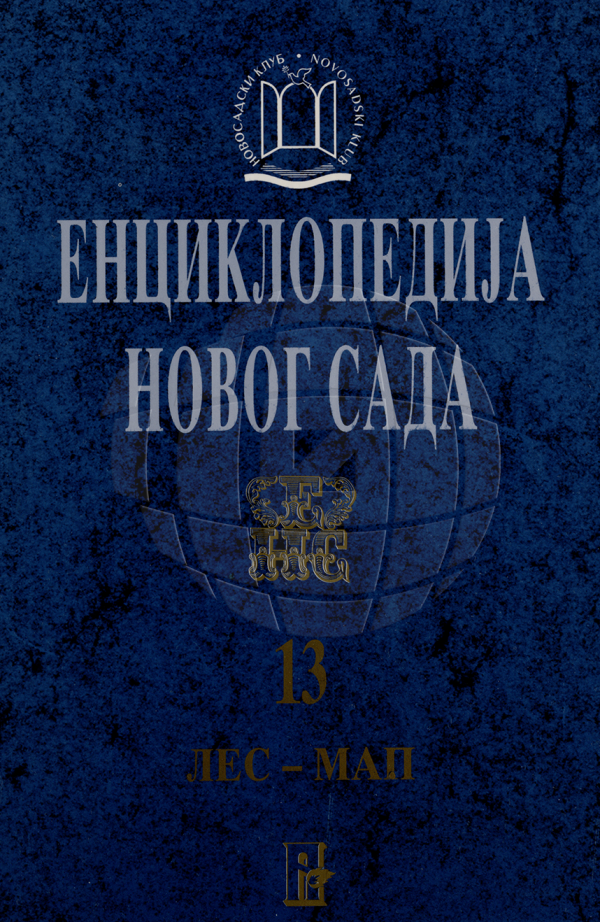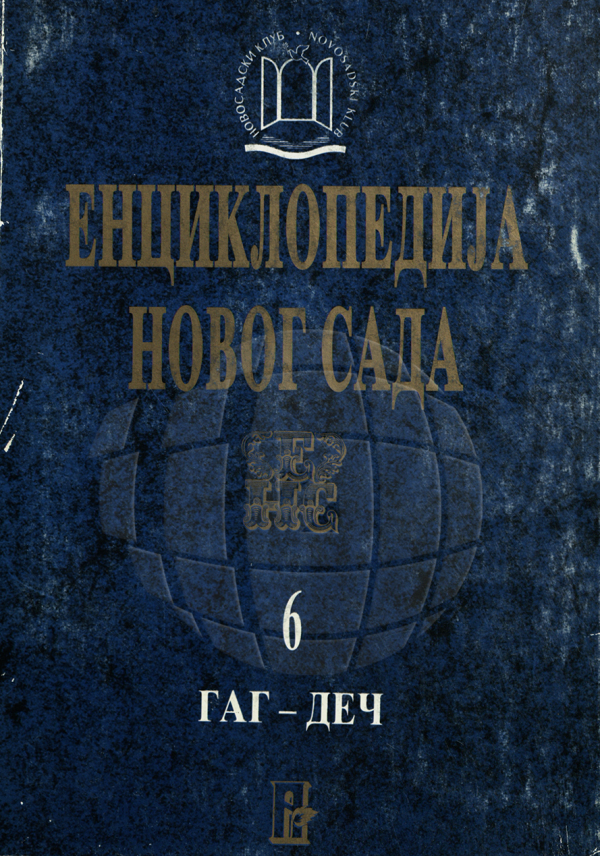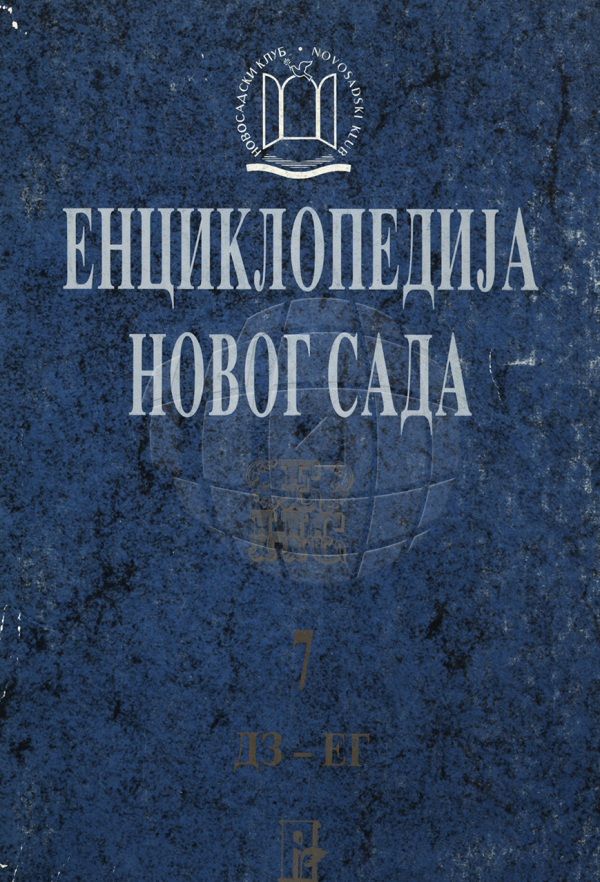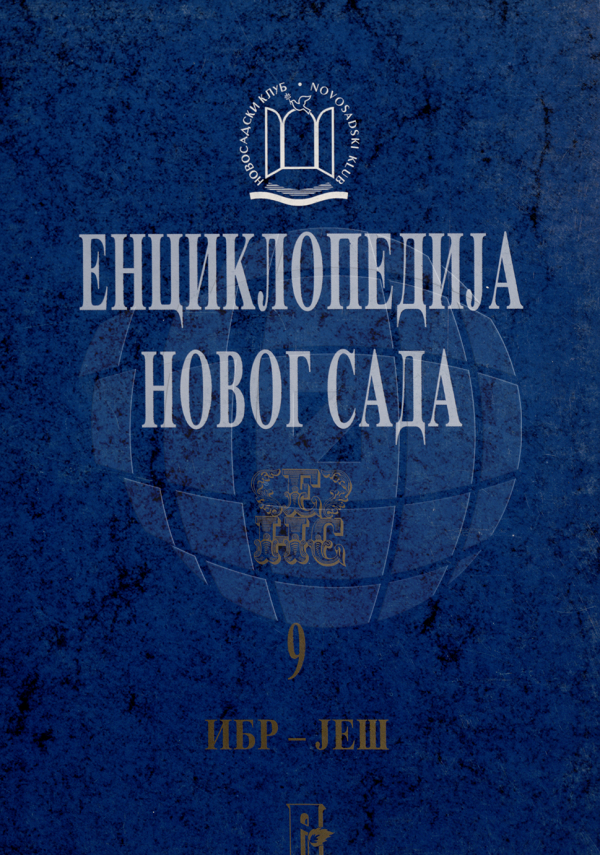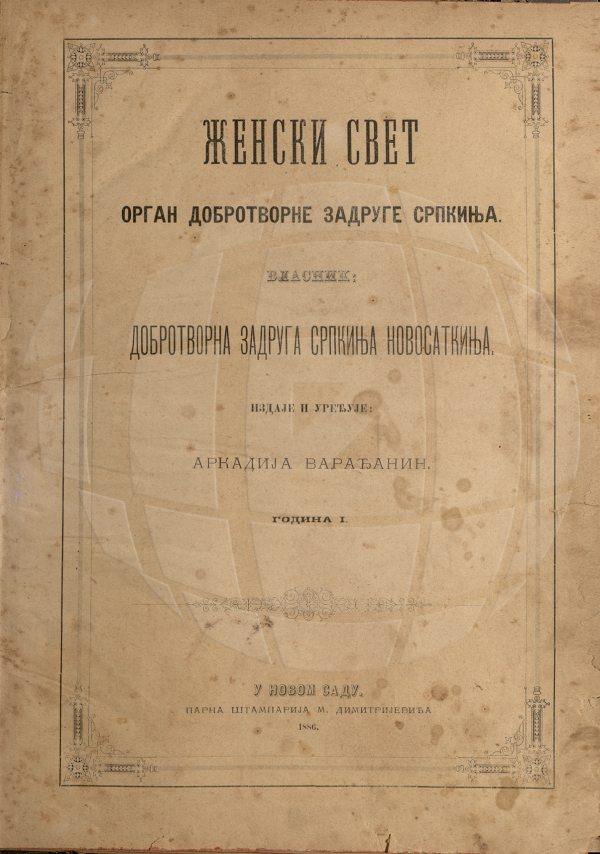
Prose

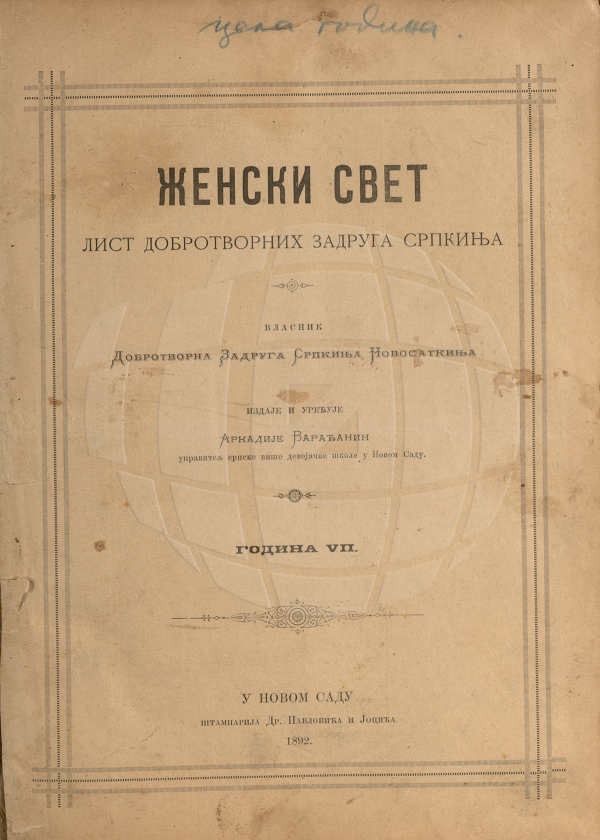

Jovan Subotić was born at Dobrinci in Srem on the 30th of January 1817. After completing his high school (gymnasium) education in Sremski Karlovci and Segedin, he proceeded in 1833 to the University of Pest (now the University of Budapest). He was among the most popular students of his time, and served as president of the Serbian Students' Union. Before going to the university he had published some verses, and while still at the university put forth a book of collected poems under the title of Lira in 1837, and in 1843 another volume of poems entitled Bosilj. In 1840 he left the University of Pest with two doctorate degrees, one in philosophy (1836) and another in laws (1840). He then settled in Pest where he opened a law practice; and began contributing regularly to Srbski narodni list. Ljetopis was by then well established as a quarterly and, because it had only two editors during this period, was much more stable. Teodor Pavlović remained as editor until he became ill in 1842. He was succeeded by Subotić for the period 1842-1853. Ljetopis improved considerably under Subotić's leadership.
Also, Subotić took additional duties as state censor for Serbian and Romanian publications; and got heavily involved in politics. The private collection of Sava Tekelija's 4,000 books was moved from Arad to Budapest on 30 March 1843, the Library of Matica Srpska became the largest Serbian library outside of Serbia. Subotić directed the Library from 1842 and 1843, and in 1842 he began publishing the first Serbian current bibliography in "Ljetopis." He prepared this bibliography with the idea that the Library should be the book centre for Serbs living in Hungarian-occupied Serbian territory.
He was married to Savka Subotić (1834-1918), a progressive proponent of women's education, and a founding member of several Serbian women's organizations.
Subotić was an ardent Serbian patriot, and during the 1848 Revolution he distinguished himself by his steady resistance to Hungarian pretensions on territories populated by Serbs. He was actively involved in the 1848 Serbian National Movement as a Budapest delegate, representing the Serbian nation in the Austrian Empire, and then as a member of the Serbian Central Committee in Karlovci. He left in his autobiography a vivid recollection of the historic first Slav congress uniting representatives from many Slav countries, then under the Austrian yoke. In 1848 he was sent as a delegate to attend the Prague Slavic Congress, 1848, a culmination of the initial phase of Pan-Slav cultural collaboration in the Habsburg Empire. The Council of the Serbs in Pest selected their delegates for Prague including Archimandrite Nikanor Grujić, a renowned orator, Archpriest Pavle Stamatovic, who led that delegation, Djordje Stojković, and Jovan Subotić. The delegates from Serbia included the dean of Serbian thought, Vuk Karadžić, and the philologist Djura Daničić, Karadzic's ardent supporter. Subotić acted as the secretary.
According to several testimonies, Prague had a festive appearance due to the efforts of all its citizens. Banners were everywhere and all the houses were decorated. Jovan Subotić, a statesman and a member of the Serbian delegation gave his own account of this event. In his writings he commented on the disruption of the Congress in the aftermath of Vidovdan (Saint Vitus Day). The congress itself is not described in much detail, but Subotić includes some interesting recollections and evaluations of the historic meeting by Serbian delegates, and by the indomitable Mikhail Bakunin which illuminate more clearly the central theme of his book. According to Subotić's recollections, the celebration in the street of Prague were monitored and declared unruly by the Austrian authorities.
"We conferred and worked until the Orthodox All Saints Day. On this very day, the Slavic Liturgy was celebrated at St. Wenceslaus Square. Archpriest Pavle Stamatović and Archimandrite Nikanor Gruijić were officiating....As soon as they (Austrian authorities) realized that the Congress turned against their plans, they became furious....and aimed to disband our Congress and arranged the bombing of Prague by General Alfred Windischgratz...."
In his memoirs, Jovan Subotić recalled that the fateful events of 1848 propelled him irrevocably into the public life. He remembered the revolution in Vienna on March 13th, which was soon followed by the revolution in Budapest on the 15th of the same month. The first demand addressed to the Parliament in Pest was the request for abolition of censorship. Subotić was among the petitioners and he subsequently lost the job that gave him 600 florins yearly.
His zeal for the national cause led him, in 1848 and 1849, to issue several news releases, articles and pamphlets, to which many of the foremost publicists in Serbia and Montenegro contributed, including Ilarion Ruvarac and Petar II Petrović Njegoš. For some time the Hungarians made it impossible for him to live in Hungarian-controlled Serbian territory, and when, in 1849, he returned to the Hungarian capital he found that his law practice had greatly diminished. Later, he moved to Novi Sad where he was chosen vice-Zupan of Sremska zupanija (the Zupanate of Srem), and in 1862 he became a member of the Appeals Court in Zagreb. In 1865 he was appointed representative to the Zagreb Sabor where he played an important political role. In 1867 Subotić attended the First All-Russian Ethnographic Exhibition and the Pan-Slavic Congress in Moscow, and as a result of it, he lost his government post. From 1870 to 1872 he was the editor of a political journal called Srpski Narod (The Serbian Public) in Novi Sad, and in 1873 he opened a law practice in Osijek. In 1884 he moved to Zemun, where he remained until his death on the 16th of January 1886.
Skupština Srba u Pešti.
„Herceg-Vladislav“, „Nemanja“, „Miloš Obilić“ i „Zvonimir“.
Romantični ep „Kralj Dečanski“ (1846).
Roman „Kaluđer“ (1881).
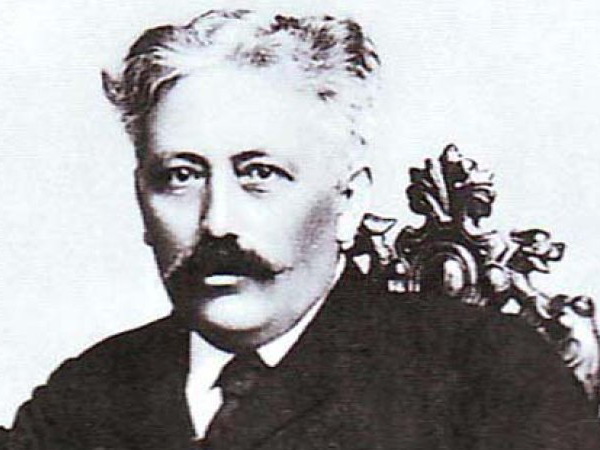
Stevan Sremac was born in Senta in Bačka region (then part of the Austrian Voivodeship of Serbia and Banat of Temeschwar) on 11 November 1855. He spent his early childhood in the city of his birth, and moved to Belgrade to study after his parents died. While still a university student, he joined the Serbian Army and participated in the 1876 and 1877–1878 wars as a volunteer. In 1878 he graduated from Belgrade's Grande École (Velika škola) in philosophy and history. He became a teacher, working in this profession for the rest of his life—in the southern Serbia's cities of Pirot, Niš and Belgrade. His personal relations with his pupils were of singularly close and affectionate nature, and the charm of his social gifts and genial character won him friends on all sides. His literary reputation was established relatively late, in 1890, with novelized chronicles of events and personages from Serbian history. These weren't published until 1903 under title Iz knjiga starostavnih ("From Ancient Books").
In political sense, he was an activist of Liberal party (Serbia), which was pretty conservative with strong nationalist sentiments and supported the rule of Obrenović dynasty.
Sremac's period spent in Niš was his most productive period. During that period, he published Božićna pečenica (1893), Ivkova slava (1895), Vukadin (1903), Limunacija na selu (1896), Pop Ćira i pop Spira (1898), Čiča Jordan (1903), and Zona Zamfirova (1906), all characterized with local colouring, realism, humour, and satire. Because of their high dramatic quality, many of these were later dramatized, with Ivkova slava, being the most successful. Sremac's characters are usually small merchants, clerks, priests, artists, and just simple folk in small Serbian towns. A realist and sharp observer, he was able to point out the changes sweeping Serbian society into a new era. Some of his stories dealing with vanishing way of life that had persisted for centuries have an unforegetable nostalgic flavor. His depiction of the patriarchal atmosphere of Serbia of his time is done in a humorous vain, but never mockingly, except when he ridicules his political opponents. Sremac's short stories reveal his love for the slowly disappearing "old way" of life. The plots are placed in his native Vojvodina, Bačka in particular, Belgrade, and mostly, southern parts of Serbia. But it is his humor for which Sremac is best known and remembered.
Many of his works were turned into films; his most popular novel Pop Ćira i pop Spira was made into TV series in 1980s, while feature films Zona Zamfirova (2002) and Ivkova slava (2005), both by director Zdravko Šotra saw huge success in Serbia and Montenegro.
Sremac died accidentally of blood poisoning in Sokobanja on 12. August 1906
Sremac died accidentally of blood poisoning in Sokobanja on 12. August 1906
